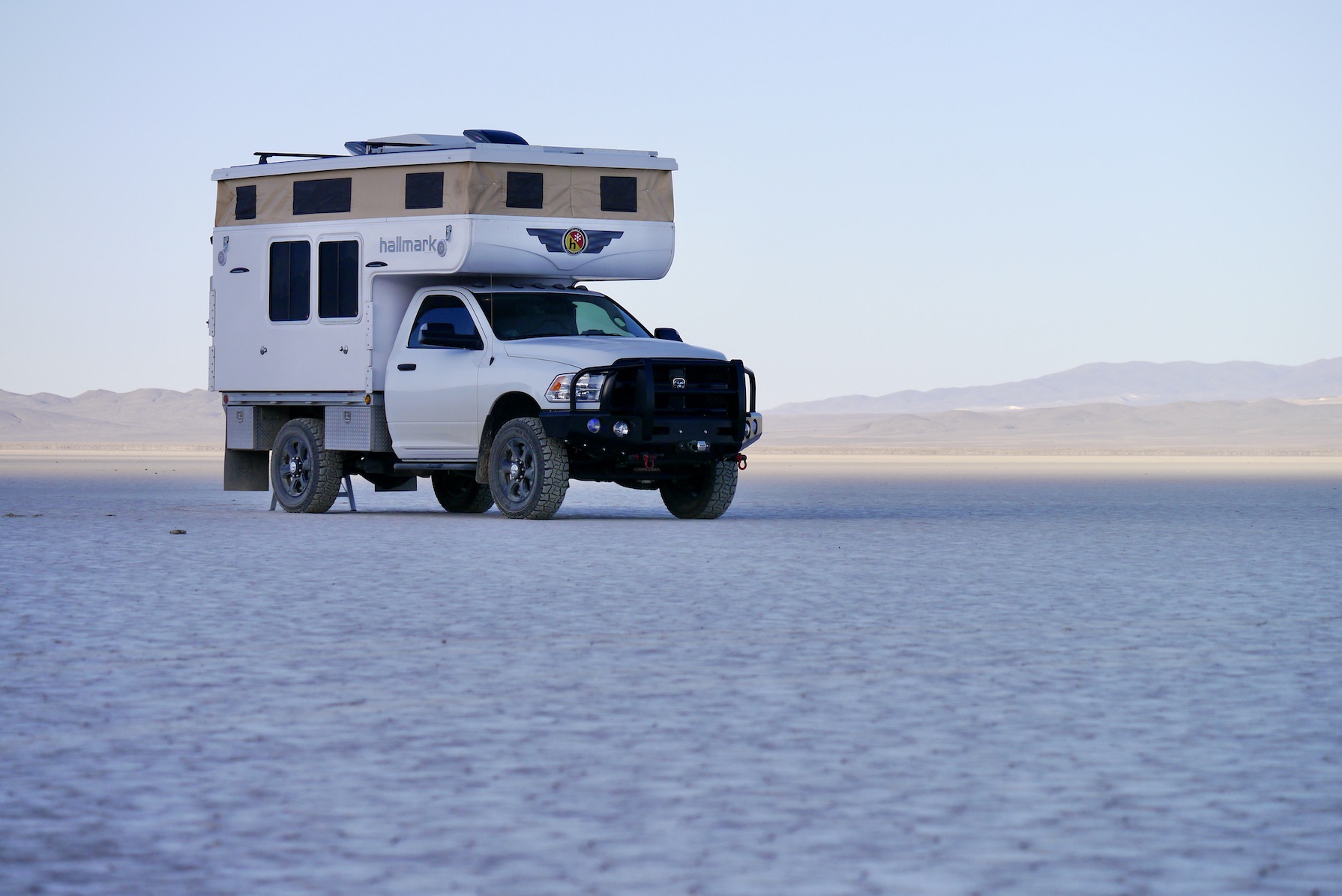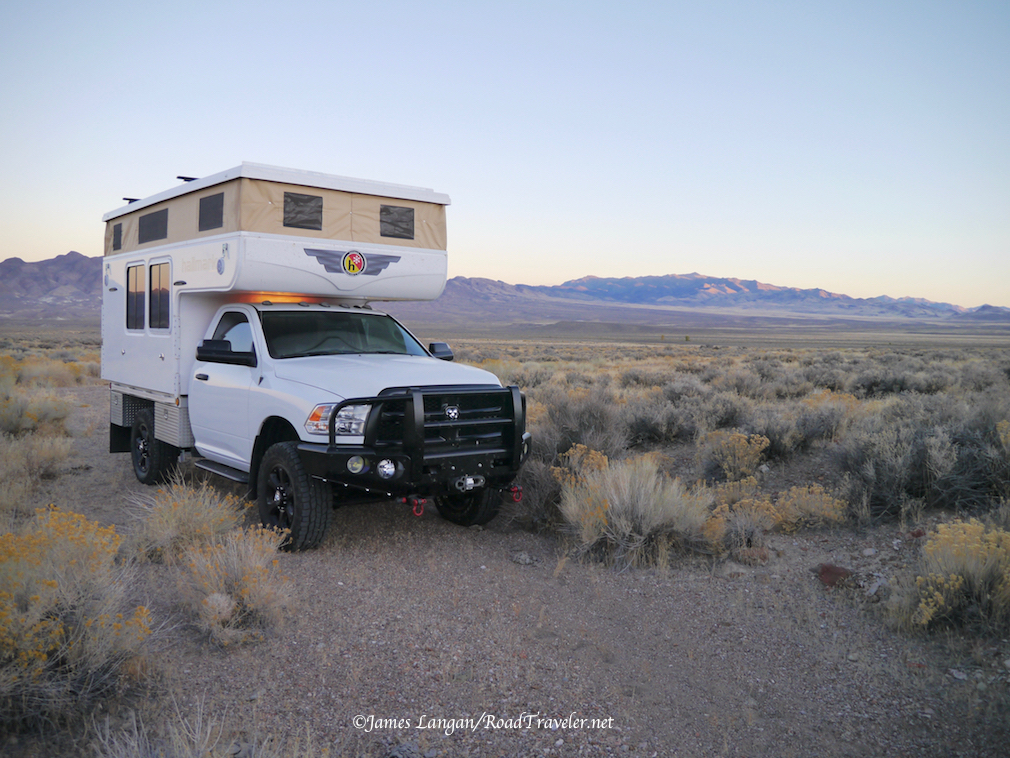
Truck Camper Suspension Q & A
The questions and answers below were prompted by recent posts regarding auxiliary springs for my truck camper outfit.
Backgrounder
Iggy The Igloo asked about heavy-duty suspension setup and options. Iggy has a Fourth Generation Ram 3500 crew cab, long bed, with a flatbed Alaskan popup. His truck had Firestone air springs, including Daystar cradles to prevent limiting droop-travel, but he did not like how the airbags consumed inches of up-travel. His front axle has Thuren Fab 1.5-inch replacement coils.
Questions, Answers, and Comments
Q] Do you leave your camper mounted full-time?
A] The chassis is always loaded with my Hallmark flatbed camper, tools, and gear. I will remove the Hallmark occasionally to inspect things, but have not done so yet.
2014-and-newer Ram 2500s (like mine) have coils in the rear, so I couldn’t install extra leaf springs (add-a-leaf). My assessment from owning two coil-sprung, late-model Ram 2500s is that the OE rear coils work surprisingly well, even with maximum loads. However, for a big camper it seems nearly everyone (2500 & 3500, F250 & F350) wants or needs additional spring-rate for better all-around performance. Regardless of whether one uses air, rubber, or metal auxiliary springs, the goal is to support the load.
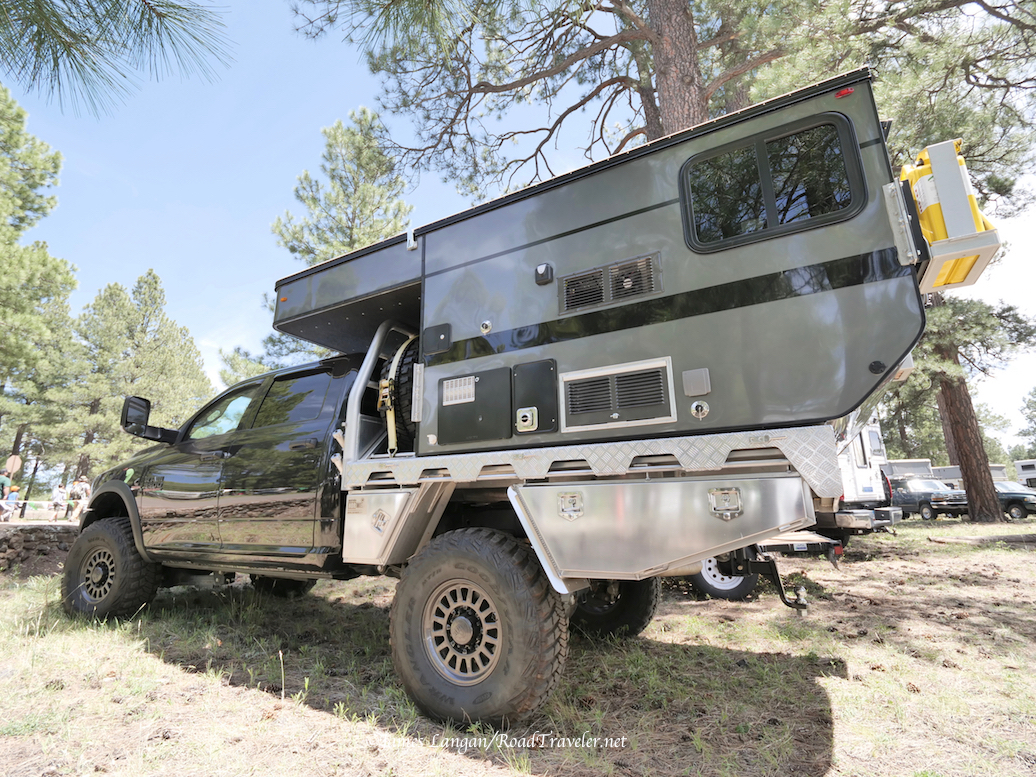
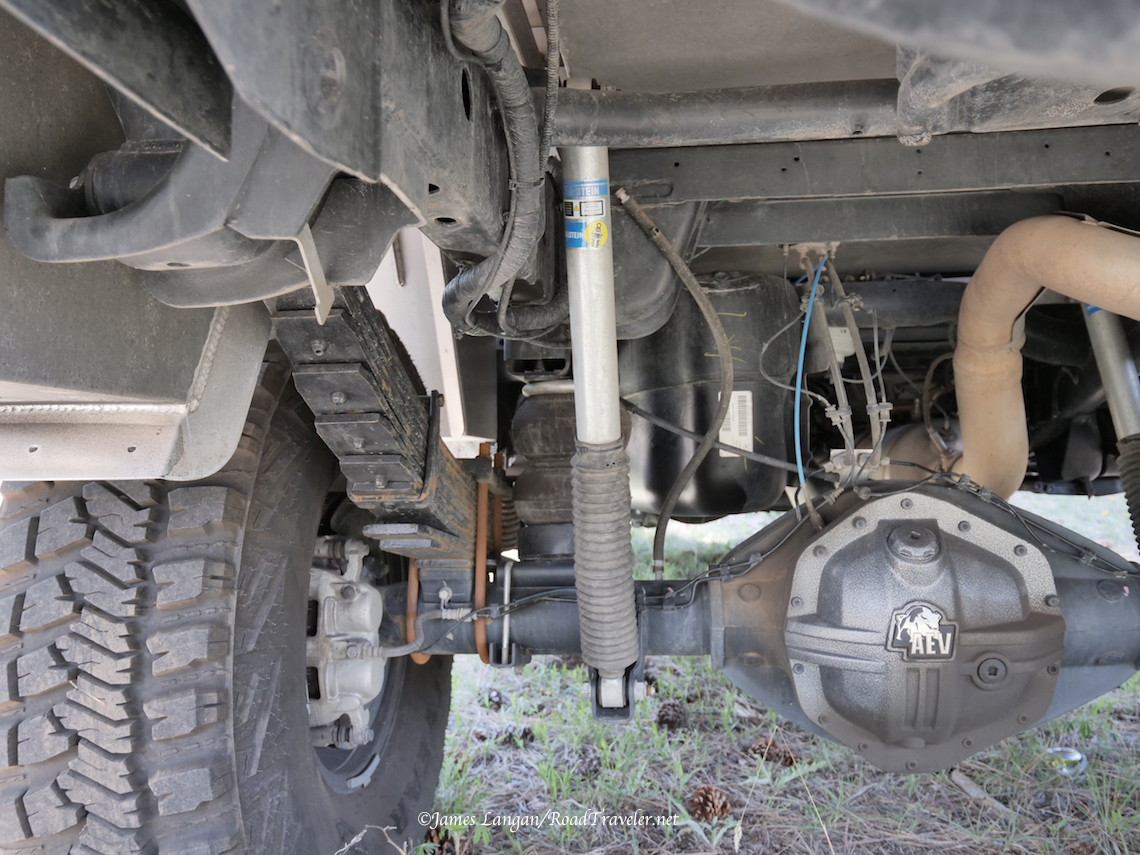
If new or additional springs were not desirable for big weight, then those who rarely fill their trucks to capacity would complain loudly about heavy-duty pickup ride-quality. New trucks generally offer a more comfortable and softer ride these days, both with and without a load, though sometimes this includes compromises for heavy-hauling.
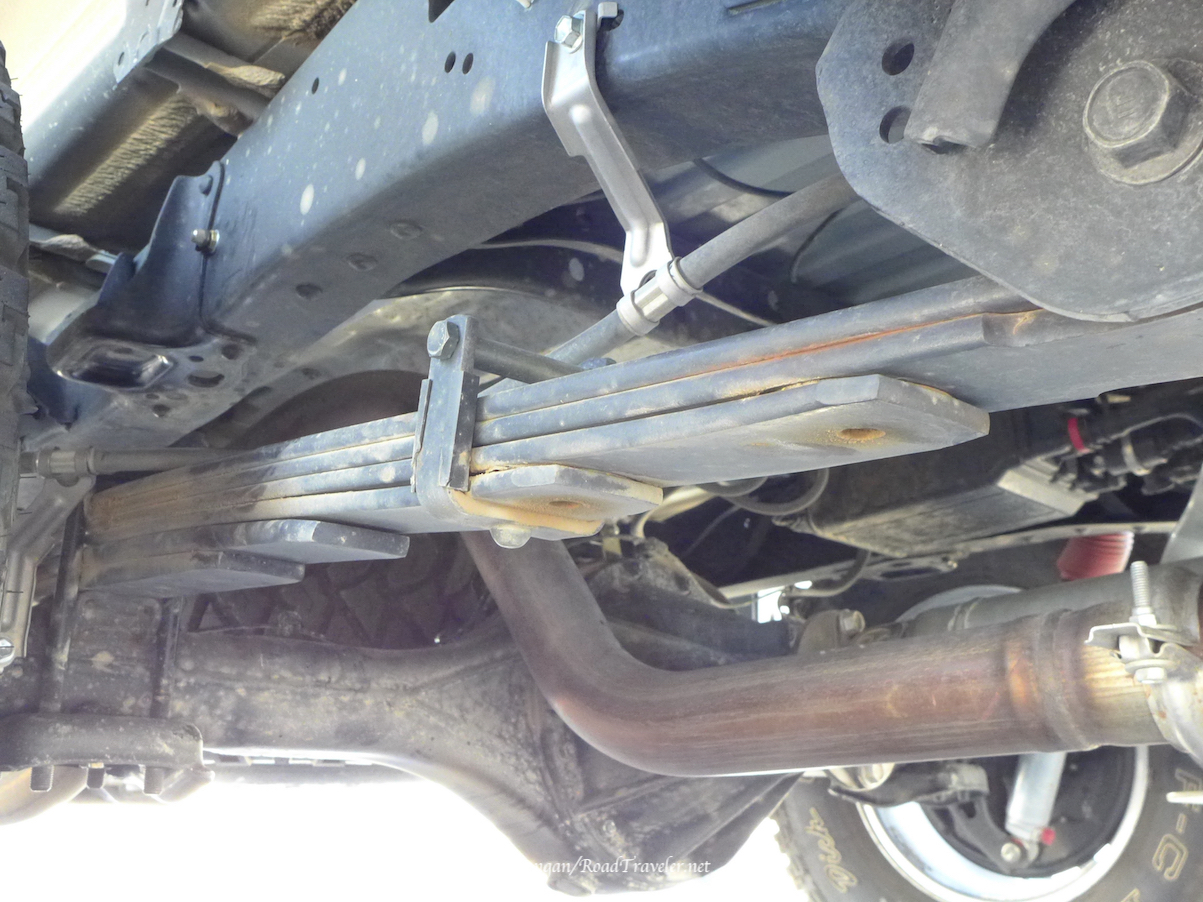
Replacement springs? Add-ons? Both?
Q] Why did you choose Timbren springs instead of an add-a-leaf?
A] My 2017 Ram 2500 uses something similar to an add-a-leaf in the form of beefier aftermarket rear coils from TufTruck. They were helpful, though they’re only designed for an additional 500-pounds. This is not enough, and I’m trying to convince TufTruck to make new coils with substantially more capacity.
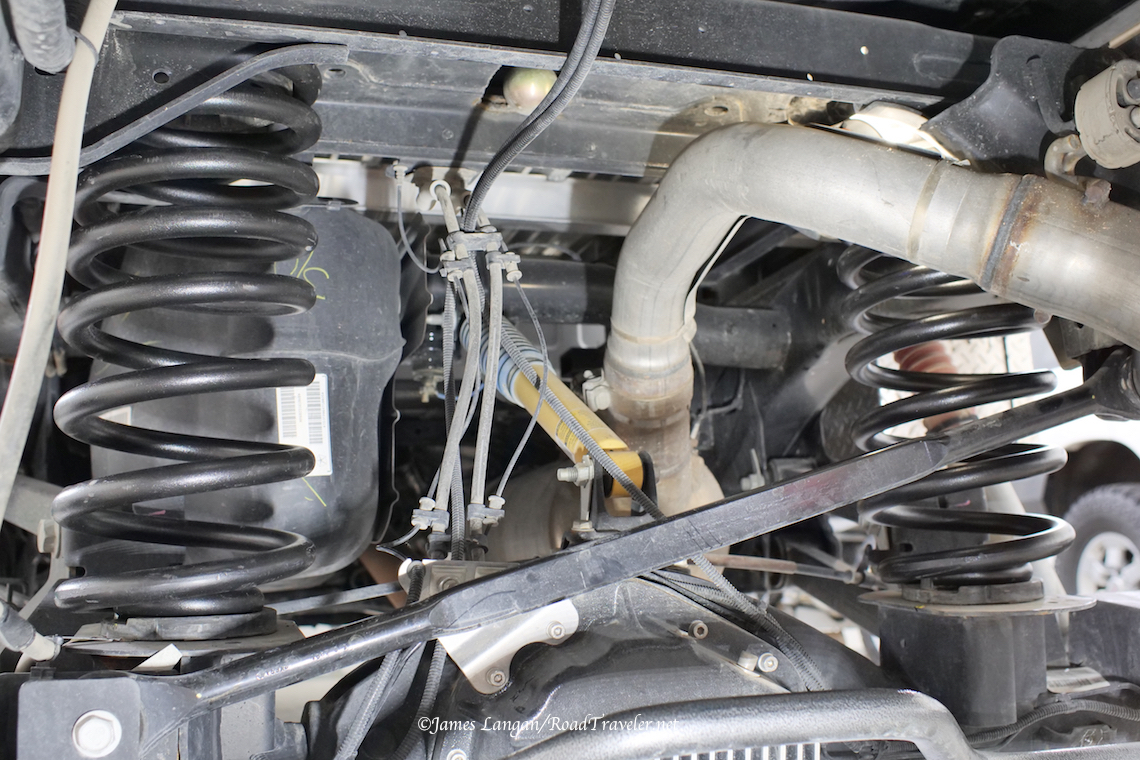
The latest single-convoluted Timbrens and my other modifications (aftermarket sway/body-roll bars, shocks, and stout tires) have helped my flatbed outfit drive and handle impressively well for its size, weight, and height.
Aftermarket air springs seem to be the most common heavy-duty suspension upgrade, likely due to their cost, adjustability, and ease of installation. I’ve used air before, though some negatives can include leaks, failure in extreme cold temperatures, and a bouncy ride. Some choose replacement leaf packs, but if the weight is removed the extreme-duty replacements can be too stiff for an unladen truck.
Butt Sag
Q] How have your Timbrens changed the sag? Did the springs put you back up to stock ride height with your load, or do you still have some sag?
A] Neither my 2014 crew cab, which used to carry a Hallmark slide-in, nor my 2017 regular cab flatbed, has ever had a sagging, negative-rake stance. This was largely because I didn’t lift or level the front first. This is the opposite approach of many these days.
For my ’17 Ram 2500, I added the Hallmark Nevada flatbed, gear and other heavy accessories, while experimenting with auxiliary rear suspension options. Lighter-duty Air Lift 1000 springs inside the rear coils were used initially, then TufTruck replacement springs, and now the rubber Timbrens.
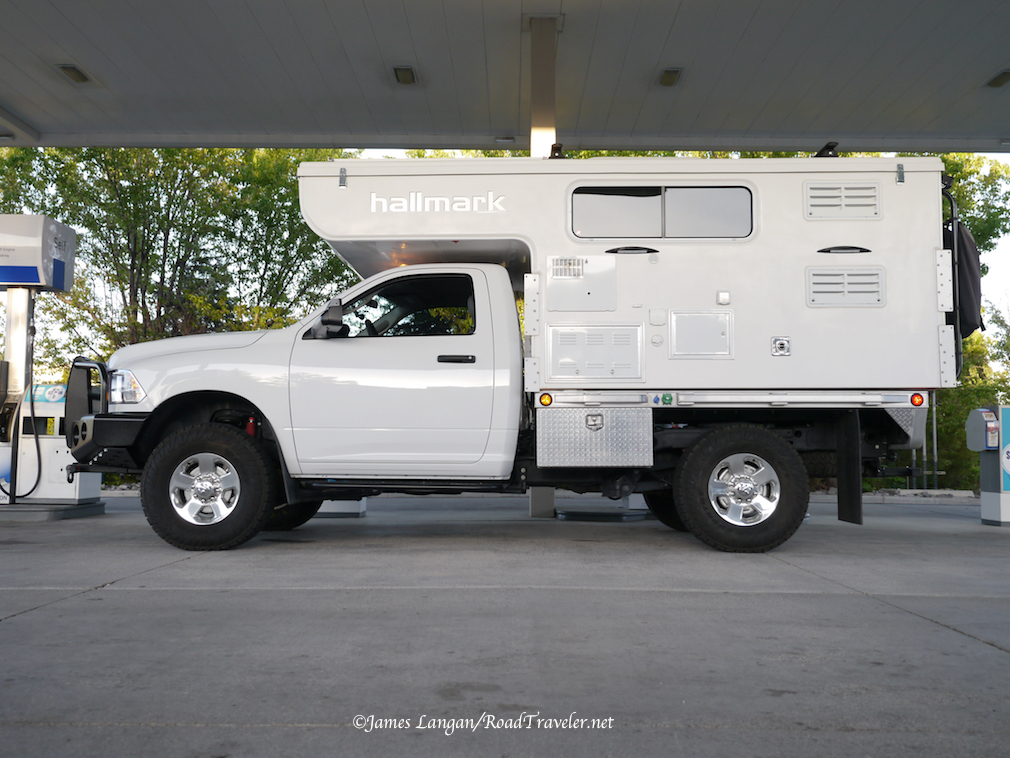
While I respect companies like Thuren Fab and think their products are great, their parts are focused on a softer ride and/or going fast over rough terrain. Softer springs don’t add load support, and that’s typically the wrong direction for heavy, overland-style, backcountry camper outfits. There are numerous examples online of folks choosing to use softer go-fast springs (particularly on the rear axle) who after installation needed them to be reengineered or replaced because they were inappropriate for their load.
To their credit, I called and talked to Thuren Fab several months ago when shopping for front coils; I shared my measured axle weights and application specifics. They were direct and honest, stating that their front springs would not give the listed lift due to the weight on my front axle (winch bumper, camper, etc.), and they did not try to talk me out of using the higher-rate TufTrucks I was considering. They agreed that firmer springs were a good idea. As mentioned above, in many cases I think the rear springs from the go-faster companies are even less desirable than the fronts for heavy-duty applications; they’re not intended for the load support that heavy outfits need.
Only using products that added spring rate to the rear suspension helped me retain some of the factory-positive rake with my camper. I dislike a butt-low, negative rake. The front remained lower than the rear until I changed the front springs.
TufTruck’s heavy-duty front coils were installed May 2019. The TufTruck TTC-1224 gave me about 2.75-inches of lift, essentially leveling the chassis. Since adding the TTC-1224 I have been playing with the ride height, keeping the chassis either slightly higher in the rear, or level, depending on how I choose to adjust the rear suspension.
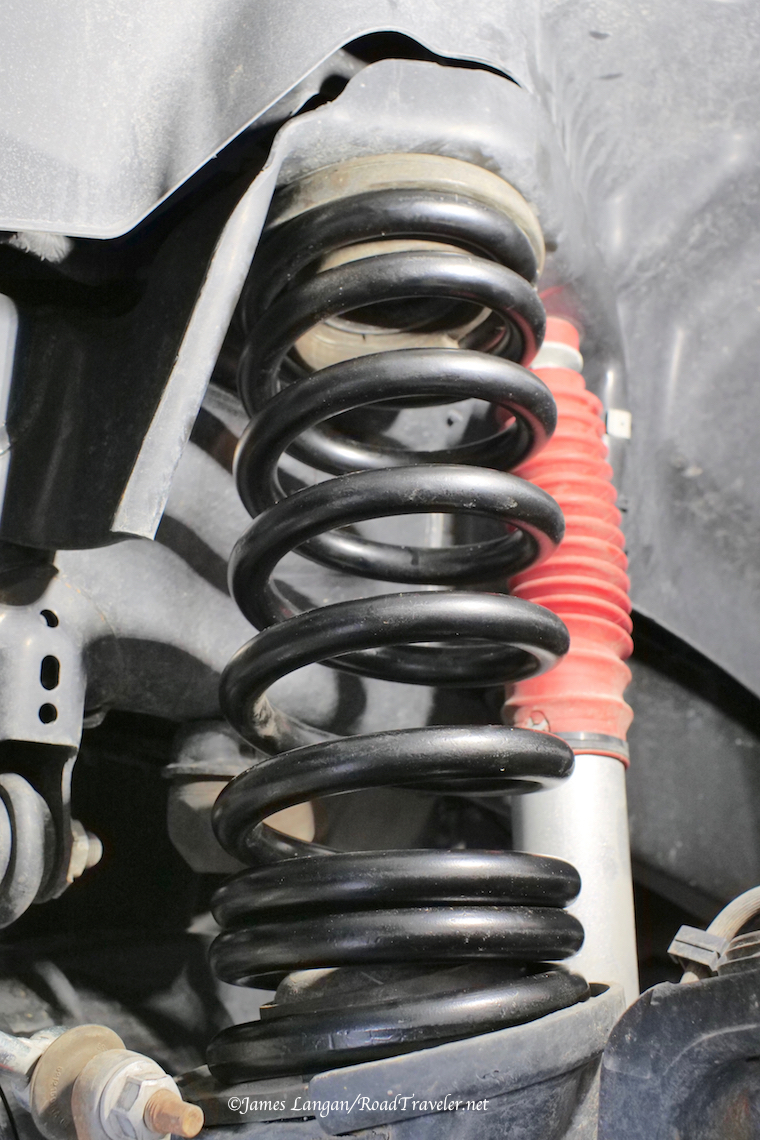
Compression Travel Loses?
Q] Do you think the Timbren’s inhibit your up-travel more than an add-a-leaf?
A] I have not tried to measure or document up-travel loses; supporting the load and overall handing has been the priority, while not limiting droop-travel. Coil-sprung axles have inherently better droop-travel, but they are generally inferior to leaf springs at controlling body-roll.
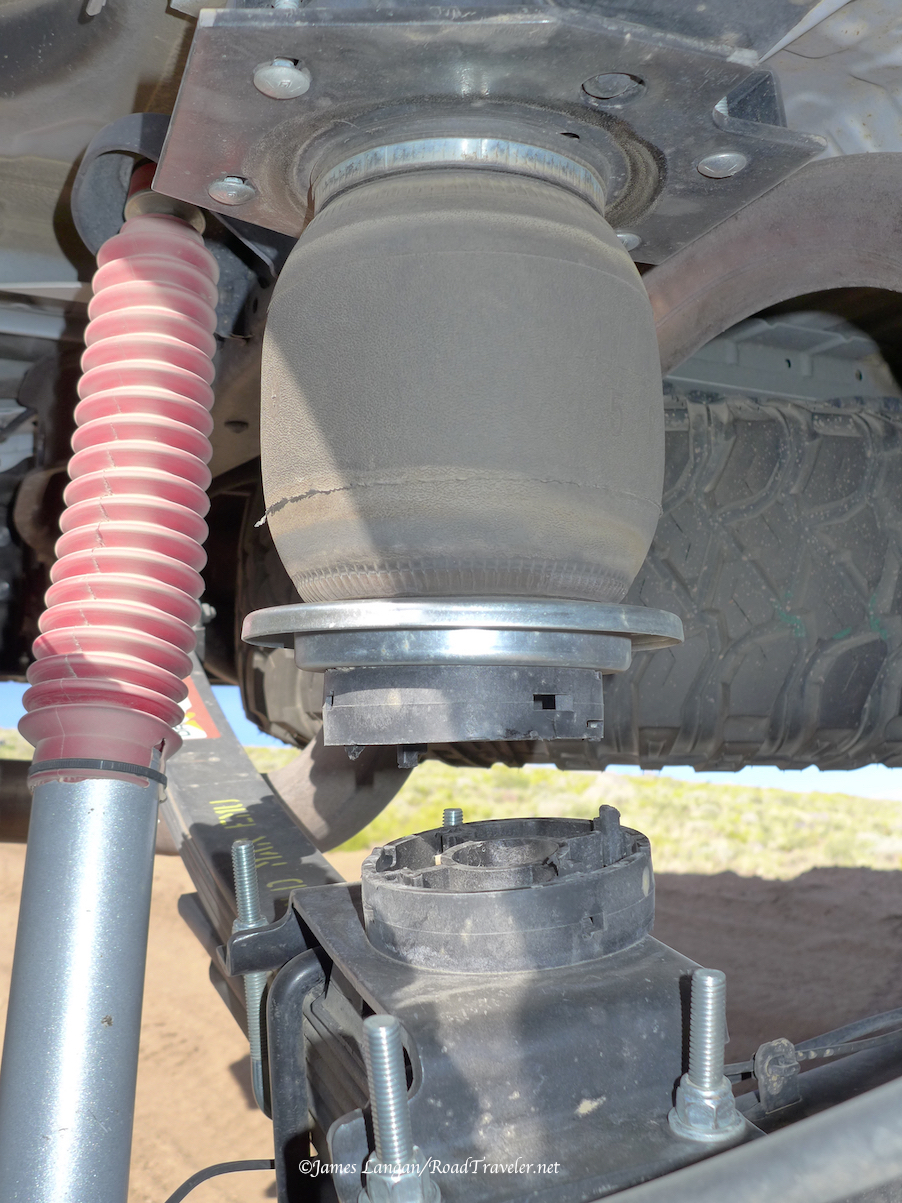
In addition to firmer springs, my aftermarket heavy-duty sway/roll-bars limit travel; their performance benefits far outweigh any losses. While I enjoy superior off-pavement performance, I’m realistic about my outfit’s capabilities in the dirt. An empty full-size pickup can do much more, easily and safely, than one with a higher center-of-gravity that’s carrying tons of payload.
As an aside, I am not critical of your adding lift/leveling blocks in the rear. Near the end of my 2011 Tundra project with a Four Wheel Campers slide-in, I placed two-inch blocks under the rear springs and it was fine, loaded and not. Taller or different blocks don’t always cause axle-wrap or other problems.
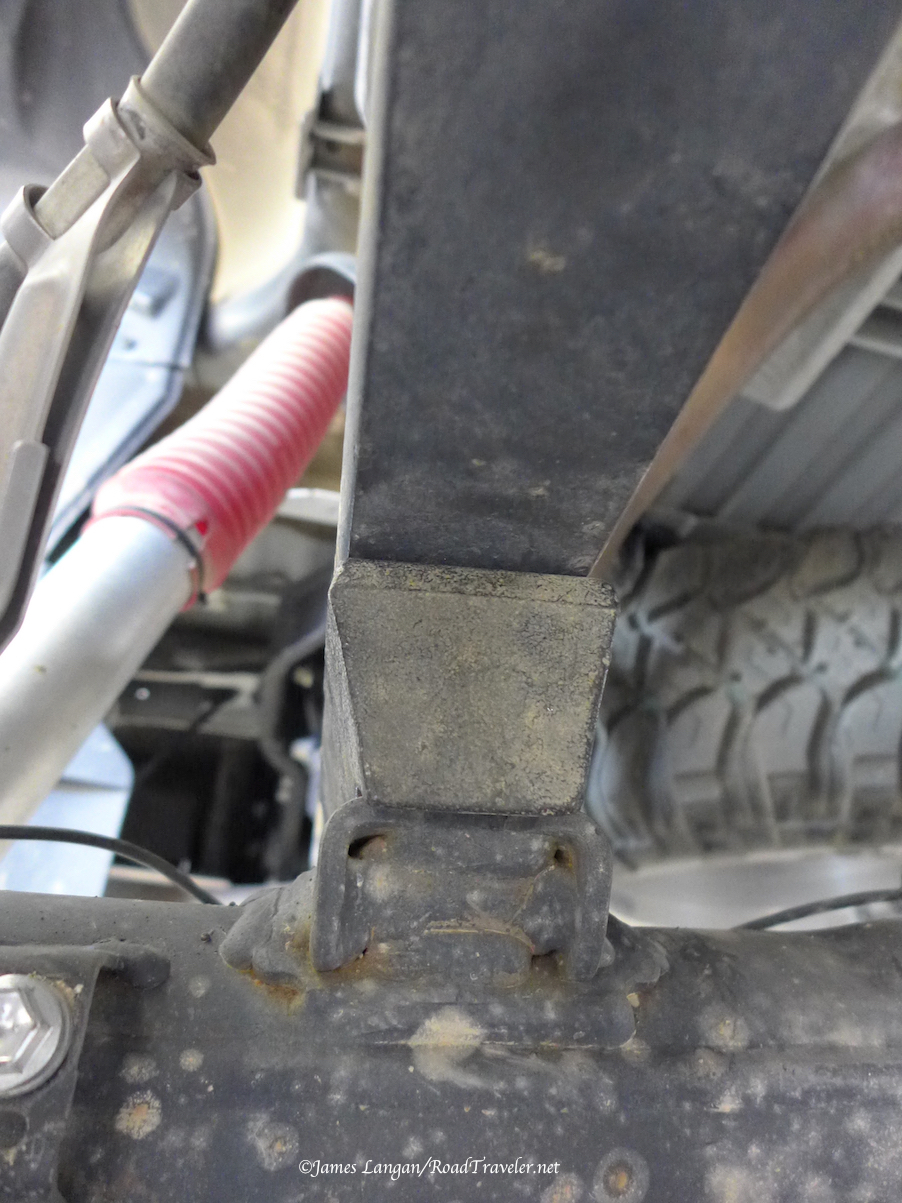
Tell ‘em you saw it on RoadTraveler.net.
James Langan
Copyright James Langan/RoadTraveler. All Rights Reserved
Resources:
